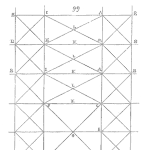
Problem solving can often be accomplished using Seven Simple Tools. Scope, data collection and data display need to be addressed, and these tools cover the needs in a manner with limited complexity. [Read more…]
Your Reliability Engineering Professional Development Site
A listing in reverse chronological order of articles by:
by Perry Parendo Leave a Comment

Problem solving can often be accomplished using Seven Simple Tools. Scope, data collection and data display need to be addressed, and these tools cover the needs in a manner with limited complexity. [Read more…]
by Ray Harkins Leave a Comment

I recently read the results of a AAA survey where Americans were asked to rate their own driving abilities. 73% of those surveyed considered themselves “better-than-average” drivers. Obviously only 50% of the drivers can actually be better than average. So it follows that at least 23% of those surveyed are mis-estimating their own skills.
This over-confidence in one’s abilities seems to find its way into all sorts of areas … including process capability analysis. Everyone who’s been around manufacturing for any length of time has certainly heard of Cp and Cpk. Most of them know that “higher is better” when it comes to these indices. And many will nod their heads and smile when you suggest that Cpk and Ppk account for centeredness, whereas Cp and Pp do not. But only a small percentage of manufacturing professionals can cogently answer the question, “What is Process Capability analysis?” [Read more…]
by Perry Parendo Leave a Comment

It has been said that beliefs come first, and we then find supporting facts for them second. Can we reduce this belief bias? Can we improve our decision making? [Read more…]
by Perry Parendo Leave a Comment

Resolving a company challenge can get complicated. Could an outside resource accelerate the process? Or is it a distraction? Are there behavioral reasons we need to consider to provide a balance perspective to make the decision? This is discussed in this video. [Read more…]
by Carl S. Carlson Leave a Comment

“Science is the process that takes us from confusion to understanding…” – Brian Greene
Properly done, Process FMEAs should improve manufacturing and assembly processes and corresponding process controls. This article describes how PFMEAs can be used to improve process controls, which are embodied in the Process Control Plan (PCP).
by Perry Parendo Leave a Comment

We all have biases impacting our ability to achieve success. We need to acknowledge them. By making personal choices, we can improve our odds. There are also team structure and ground rules to consider for providing an advantage. [Read more…]
by Perry Parendo Leave a Comment

Process capability is a key technique for confirming design and process requirements. This video discusses common elements of the approach. [Read more…]
by Perry Parendo Leave a Comment
As casual dress has taken over many work environments, we still wear a tie to events and while working with clients. Why do we continue to do this? Listen to hear the background of this choice. [Read more…]
by Perry Parendo Leave a Comment

A critical operation within many organizations is CAPA processes. The tool set to address issues is extensive. This video addresses the topic at a high level to help direct your approach. [Read more…]
by Carl S. Carlson Leave a Comment
“I didn’t fail the test, I just found 100 ways to do it wrong.” Benjamin Franklin
Properly done, Design FMEAs should improve product designs and test plans. This article describes how DFMEAs can be used to improve testing and analysis, which are embodied in the Design Verification Plan (DVP).
In November 2019, General Motors recalled over 640,000 pickup trucks worldwide because hot gas from a high-tech seat belt can set the carpeting on fire [1]. The recall covers 2019 and 2020Chevrolet Silverado and GMC Sierra 1500 trucks. Also included are some 2020 Silverado and Sierra 2500 and 3500 heavy-duty pickups. All have carpet as a floor covering, GM says it uses a small explosion to move a piston that tightens the belts before a crash. The explosion can release hot gas through an opening in a bracket, possibly setting the carpet on fire. The company reports two fires but no injuries. [Read more…]
by Perry Parendo Leave a Comment

Focusing on data only is a limiting view compared to wanting to make decisions. The decisions should come first, and the data to support that comes second. This video covers this conversation. [Read more…]
by Perry Parendo Leave a Comment

Your R&D work is full of sensitive information. How do you know you can trust Perry’s Solutions with your process? This video covers this topic. [Read more…]
by Perry Parendo Leave a Comment

A coaching friend talked to me once about “False Hustle” – things that players do to look like they are working hard. In fact, it is a lazy habit and avoidable by doing things right. The same things happens in corporate situations with product development. This video gives examples for each environment. [Read more…]

“You can’t cross the sea merely by standing and staring at the water” – said Rabindranath Tagore, Nobel Prize recipient for literature. Not preventing harm is an example of this quote.
The quotation is an inspirational reminder that people achieve nothing unless they take purposeful action that has measurable results. Taking action on potential human errors, so that harm to system users is totally prevented, is a very productive goal because its impact is highly significant.
This article mostly discusses safety in hospitals because everyone is familiar with safety issues in healthcare. The principles equally apply to any process such as design, manufacturing, construction, and aerospace (Boeing 737 Max is an example). [Read more…]